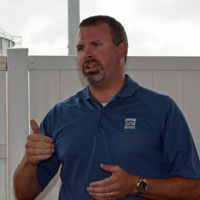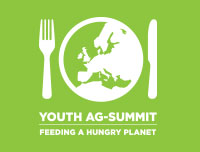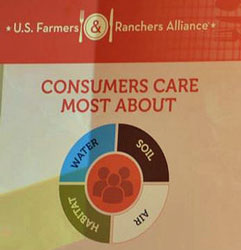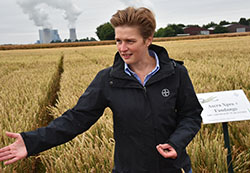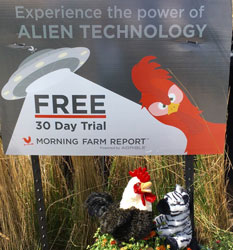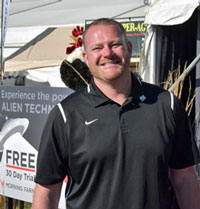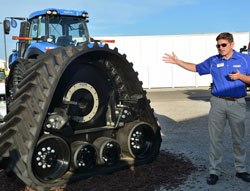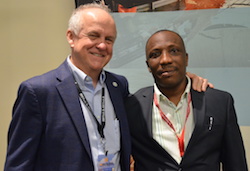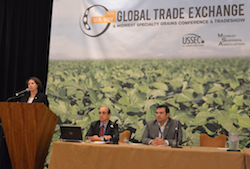 Sustainability is in nearly every conversation concerning agriculture these days. Therefore, it was no surprise the U.S. Soy Global Trade Exchange tackled the topic as well. The U.S. Soybean Export Council (USSEC) held a Sustainability Forum focused on how to practice sustainability throughout the entire soy value chain. USSEC Marketing Director for Market Access, Rosalind Leeck, spoke with me about the sustainably grown U.S. soybean and their Soy Sustainability Assurance Protocol (SSAP).
Sustainability is in nearly every conversation concerning agriculture these days. Therefore, it was no surprise the U.S. Soy Global Trade Exchange tackled the topic as well. The U.S. Soybean Export Council (USSEC) held a Sustainability Forum focused on how to practice sustainability throughout the entire soy value chain. USSEC Marketing Director for Market Access, Rosalind Leeck, spoke with me about the sustainably grown U.S. soybean and their Soy Sustainability Assurance Protocol (SSAP).
“SSAP really evolved out of a demand placed upon the industry from the European Union. When we started looking at what the European customers were asking us we realized we had a great story to tell. We soon started to document everything the farmers were doing from a regulatory standpoint that they were required to do as well as the voluntary actions they did on their farm to make sure they maintained a sustainable business.”
Rosalind reminded those in attendance how sustainability encompasses more than just the environment. She said we should picture a three legged stool. Social sustainability, economic sustainability and environmental sustainability are all equally important.
Through SSAP, USSEC has created tools for customers around the world. These tools answer their questions about the soy products they buy because they understand different parts of the world are concerned about different things. “We have tried to capture all the good things we are doing so when our customers buy U.S. soy they can verify how the product was produced.”
Listen to my complete interview with Rosalind to learn more about SSAP here: Interview with Rosalind Leeck, USSEC
View and download photos from the event here: 2016 US Soy Global Trade Exchange Photos

